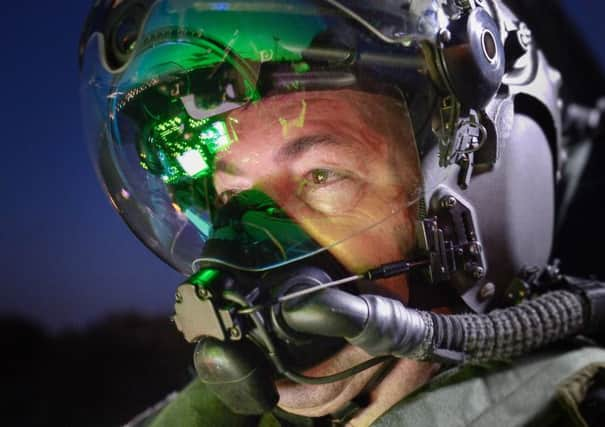Night vision testing for Fylde coast-designed helmet


BAE Systems has begun night trials on its Striker II helmet-mounted display (HMD), the company’s most advanced fighter pilot helmet, to evaluate its digital night vision capability.
Successful trials will lead the way to a fully integrated digital night vision helmet replacing the need for traditional analogue night vision goggles.
Advertisement
Hide AdAdvertisement
Hide AdDeveloped and tested by BAE Systems, Striker II is a fully digital solution that provides today’s combat pilot with night vision and target tracking technology. The firm has begun evaluating the digital night vision capability through a series of night flight trials from its Military Air & Information business in Warton.
BAE test pilot Peter Kosogorin, said: “Striker II has a high-definition, lightweight night vision camera which translates information and displays it on the helmet’s visor.
“This removes the need for heavy night vision goggles which increase g-force pressures on the head and neck, limiting the pilot’s manoeuvrability in the cockpit.
“The helmet provides a clear and accurate visual display and a seamless transition from day to night, eliminating the need to manually configure and adjust night vision goggles.”
Advertisement
Hide AdAdvertisement
Hide AdBAE Systems will continue to evaluate the helmet’s integration with Typhoon aircraft in another series of flight trials later this year.
Chris Colston, business development director at BAE Systems, said: “The second set of trials is the next step in the flight test program to prove Striker II offers true ‘plug and play’ compatibility with the Typhoon and builds upon the initial trials to further evaluate the digital night vision capability.”
Striker II also includes a tracking system that ensures the pilot’s exact head position and the aircraft computer system are continuously in sync and removes delays often found in such technology.
Previous articles: